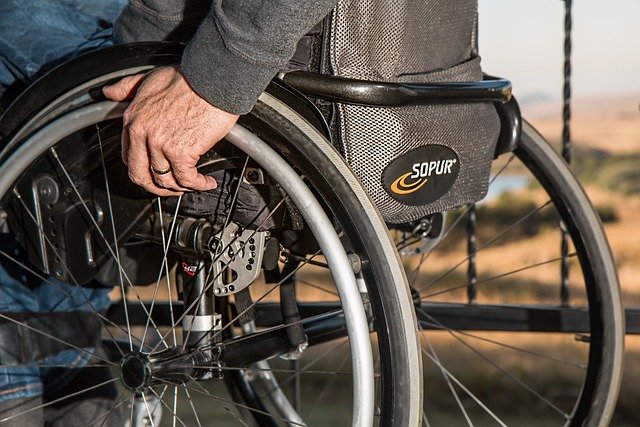Alternative to Liposuction in the Netherlands
Many individuals in the Netherlands seek effective ways to refine their silhouette or rejuvenate their skin without extensive recovery or the complexities of traditional surgery. As aesthetic treatments continue to evolve, new possibilities emerge for achieving a more refreshed and contoured appearance. Learn more about innovative approaches that focus on natural-looking results with minimal disruption to daily life, some requiring as little as 45 minutes, offering insights into procedures designed to meet modern preferences for efficiency and convenience.

Understanding Liposuction: A Closer Look
Liposuction has long been the gold standard for removing stubborn fat deposits that resist diet and exercise. The traditional procedure involves making small incisions in the skin, inserting a cannula (thin tube), and using suction to remove fat cells. While effective, conventional liposuction requires general anesthesia, carries risks including infection and contour irregularities, and demands significant recovery time—typically 1-2 weeks before returning to normal activities and several months for complete healing.
In the Netherlands, liposuction is widely available at specialized clinics and hospitals, but many patients seek alternatives that offer similar benefits with fewer drawbacks. Understanding the fundamental mechanism of fat removal helps in evaluating the effectiveness of these alternatives.
Non-Surgical Fat Reduction Alternatives
Non-invasive and minimally invasive alternatives to liposuction have gained significant popularity in the Netherlands. These procedures typically require no incisions, little to no downtime, and can be performed in comfortable outpatient settings.
CoolSculpting (cryolipolysis) stands as one of the most sought-after alternatives. This FDA-approved treatment freezes and eliminates fat cells through controlled cooling technology. The procedure takes approximately 35-60 minutes per treatment area, with patients typically returning to normal activities immediately afterward. Results develop gradually over 2-3 months as the body naturally eliminates the treated fat cells.
Another popular option is ultrasound-based treatments like Ultrashape or HIFU (High-Intensity Focused Ultrasound). These technologies use sound waves to disrupt fat cells without harming surrounding tissues. Dutch clinics often combine these treatments with radiofrequency technologies for enhanced skin tightening effects alongside fat reduction.
The Efficiency and Accessibility of Modern Liposuction
While exploring alternatives, it’s worth noting that liposuction itself has evolved significantly. Modern approaches in the Netherlands now include techniques like tumescent liposuction, which uses local rather than general anesthesia, and laser-assisted liposuction (SmartLipo), which offers enhanced precision and skin tightening benefits.
VASER liposuction, another advancement available in Dutch clinics, uses ultrasound technology to break up fat cells before removal, resulting in more precise contouring and less trauma to surrounding tissues. This often translates to shorter recovery times compared to traditional methods.
These modern liposuction variations typically require 45-90 minutes per treatment area, with many patients returning to light activities within a few days rather than weeks. However, compression garments are still necessary for several weeks post-procedure to ensure optimal results.
Minimally Invasive Body Contouring Options
Between non-surgical alternatives and traditional liposuction lies a category of minimally invasive procedures increasingly popular in the Netherlands. These offer more dramatic results than non-surgical options while maintaining shorter recovery times than traditional liposuction.
BodyTite and FaceTite use radiofrequency-assisted lipolysis (RFAL) technology to simultaneously melt fat and tighten skin. These procedures require only tiny incisions and can be performed under local anesthesia, with most patients resuming normal activities within 3-7 days.
Another option gaining traction is Renuvion/J-Plasma, which combines radiofrequency energy with helium plasma for powerful skin contraction alongside modest fat reduction. This can be particularly effective for areas where skin laxity is a concern alongside excess fat.
Is Liposuction the Right Choice for You?
Determining whether to pursue liposuction or an alternative depends on several factors, including the amount of fat to be removed, desired recovery time, budget constraints, and personal health considerations.
Dutch medical practitioners typically recommend liposuction for individuals seeking more dramatic fat removal (over 5kg) or precise body contouring. Alternatives generally work best for those with smaller, isolated fat deposits who prefer minimal downtime.
Important considerations include:
-
BMI and overall health status
-
Skin elasticity and tone
-
Realistic expectations about outcomes
-
Financial considerations and insurance coverage
-
Willingness to maintain results through lifestyle changes
Most Dutch clinics recommend scheduling a consultation with a qualified specialist who can assess individual needs and recommend appropriate treatments based on body composition and aesthetic goals.
Cost Comparison of Liposuction and Alternatives in the Netherlands
Understanding the financial investment required helps in making informed decisions about body contouring options. Below is a comparison of typical costs for various procedures available in the Netherlands:
| Procedure | Provider Type | Cost Estimation (€) | Sessions Typically Needed |
|---|---|---|---|
| Traditional Liposuction | Hospital/Specialized Clinic | 2,500-6,000 per area | 1 |
| VASER Liposuction | Specialized Clinic | 3,000-7,000 per area | 1 |
| CoolSculpting | Medical Spa/Clinic | 700-1,500 per application | 1-3 |
| BodyTite | Specialized Clinic | 2,000-4,000 per area | 1 |
| Ultrashape/HIFU | Medical Spa/Aesthetic Clinic | 800-2,000 per area | 3-6 |
| Radiofrequency Treatments | Aesthetic Clinic | 150-350 per session | 6-10 |
Prices, rates, or cost estimates mentioned in this article are based on the latest available information but may change over time. Independent research is advised before making financial decisions.
It’s worth noting that while traditional liposuction typically requires a single session, many non-surgical alternatives necessitate multiple treatments to achieve comparable results. Additionally, most cosmetic procedures in the Netherlands are not covered by basic health insurance and are considered out-of-pocket expenses.
Conclusion
The landscape of body contouring in the Netherlands offers numerous alternatives to traditional liposuction, ranging from completely non-invasive treatments to minimally invasive procedures. These options cater to different needs, preferences, and budgets, allowing individuals to choose solutions that best align with their lifestyle and aesthetic goals. As technology continues to advance, Dutch residents can expect even more efficient and accessible options for body sculpting with reduced downtime and complications.
This article is for informational purposes only and should not be considered medical advice. Please consult a qualified healthcare professional for personalized guidance and treatment.




